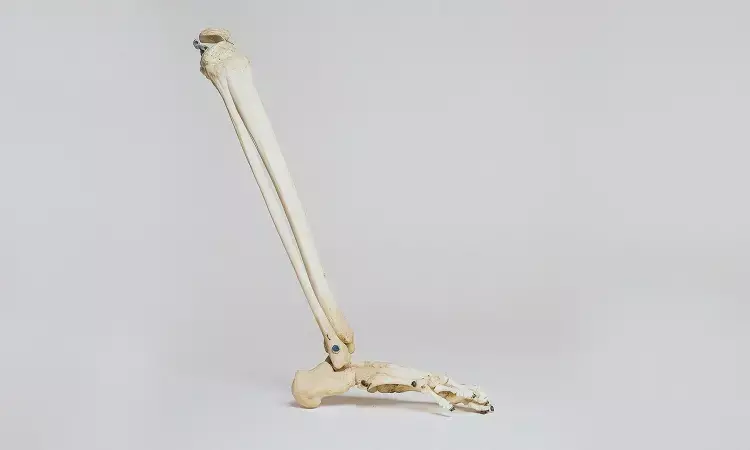- Home
- Medical news & Guidelines
- Anesthesiology
- Cardiology and CTVS
- Critical Care
- Dentistry
- Dermatology
- Diabetes and Endocrinology
- ENT
- Gastroenterology
- Medicine
- Nephrology
- Neurology
- Obstretics-Gynaecology
- Oncology
- Ophthalmology
- Orthopaedics
- Pediatrics-Neonatology
- Psychiatry
- Pulmonology
- Radiology
- Surgery
- Urology
- Laboratory Medicine
- Diet
- Nursing
- Paramedical
- Physiotherapy
- Health news
- Fact Check
- Bone Health Fact Check
- Brain Health Fact Check
- Cancer Related Fact Check
- Child Care Fact Check
- Dental and oral health fact check
- Diabetes and metabolic health fact check
- Diet and Nutrition Fact Check
- Eye and ENT Care Fact Check
- Fitness fact check
- Gut health fact check
- Heart health fact check
- Kidney health fact check
- Medical education fact check
- Men's health fact check
- Respiratory fact check
- Skin and hair care fact check
- Vaccine and Immunization fact check
- Women's health fact check
- AYUSH
- State News
- Andaman and Nicobar Islands
- Andhra Pradesh
- Arunachal Pradesh
- Assam
- Bihar
- Chandigarh
- Chattisgarh
- Dadra and Nagar Haveli
- Daman and Diu
- Delhi
- Goa
- Gujarat
- Haryana
- Himachal Pradesh
- Jammu & Kashmir
- Jharkhand
- Karnataka
- Kerala
- Ladakh
- Lakshadweep
- Madhya Pradesh
- Maharashtra
- Manipur
- Meghalaya
- Mizoram
- Nagaland
- Odisha
- Puducherry
- Punjab
- Rajasthan
- Sikkim
- Tamil Nadu
- Telangana
- Tripura
- Uttar Pradesh
- Uttrakhand
- West Bengal
- Medical Education
- Industry
Using Romosozumab prior to Antiresorptive Medication tied to better BMD gains: Study

According to recent research, investigators have found that treatment with Romosozumab first produces substantial BMD gains at the total hip and lumbar spine within 1 year, and that subsequent transition to a potent antiresorptive can augment those gains, as published in the American College of Rheumatology.
Prior studies of anabolic/antiresorptive treatment sequences indicate that using teriparatide first followed by an antiresorptive results in greater bone mineral density (BMD) gains, particularly at the total hip, vs using an antiresorptive first followed by teriparatide. Romosozumab (Romo) increases bone formation while decreasing bone resorption, significantly increasing BMD and reducing fracture risk within 1 year. Therefore, "Treatment sequence is important with romosozumab," said Felicia Cosman, M.D., professor of medicine at Columbia University College of Physicians and Surgeons in New York City.
Dr. Cosman and colleagues evaluated percentage change from baseline in BMD at the total hip and lumbar spine from four trials where patients received Romo prior to an antiresorptive (Phase 3 ARCH and Phase 3 FRAME or Romo following antiresorptive therapy (Phase 3 STRUCTURE and Phase 2. Percentage change from baseline BMD was assessed by either an ANCOVA (FRAME) or repeated measures (ARCH, STRUCTURE) model adjusting for baseline covariates, or as summary statistics.
The following results were noted-
a. Total hip BMD: In ARCH, BMD increased 6.2% with 1 year of Romo, and a total of 7.1% with the 2-year Romo/Aln sequence. In FRAME, patients gained 6.8% with 1 year of Romo and a total of 8.8% with the 2-year Romo/DMAb sequence. Patients in STRUCTURE, who were previously treated for ≥1 year with Aln, gained 2.9% with 1 year of Romo. In a Phase 2 study, following 1 year of DMAb, 1 year of Romo increased BMD by 0.9%, for a total gain of 3.8% with the 2-year DMAb/Romo sequence.
b. Lumbar Spine BMD: In ARCH, BMD increased 13.7% with 1 year of Romo, and a total of 15.2% with the 2-year Romo/Aln sequence; and in FRAME, patients gained 13.3% with 1 year of Romo and a total of 17.6% with the 2-year Romo/DMAb sequence. Patients in STRUCTURE (previously on Aln for ≥1 year) gained 9.8% with 1 year of Romo. In Phase 2 study (after 1 year of DMAb), 1 year of Romo increased BMD by 5.3%, for a total gain of 11.5% with the 2-year DMAb/Romo sequence.
Therefore, the authors concluded that "in patients treated with Aln or DMAb, the transition to Romo can improve BMD, though gains are not as large as those seen when Romo is used first. Since BMD on treatment is a strong surrogate for bone strength, our findings support the concept that high-risk patients should be offered treatment with Romo first, followed by a transition to a potent antiresorptive."
Dr. Nandita Mohan is a practicing pediatric dentist with more than 5 years of clinical work experience. Along with this, she is equally interested in keeping herself up to date about the latest developments in the field of medicine and dentistry which is the driving force for her to be in association with Medical Dialogues. She also has her name attached with many publications; both national and international. She has pursued her BDS from Rajiv Gandhi University of Health Sciences, Bangalore and later went to enter her dream specialty (MDS) in the Department of Pedodontics and Preventive Dentistry from Pt. B.D. Sharma University of Health Sciences. Through all the years of experience, her core interest in learning something new has never stopped. She can be contacted at editorial@medicaldialogues.in. Contact no. 011-43720751
Dr Kamal Kant Kohli-MBBS, DTCD- a chest specialist with more than 30 years of practice and a flair for writing clinical articles, Dr Kamal Kant Kohli joined Medical Dialogues as a Chief Editor of Medical News. Besides writing articles, as an editor, he proofreads and verifies all the medical content published on Medical Dialogues including those coming from journals, studies,medical conferences,guidelines etc. Email: drkohli@medicaldialogues.in. Contact no. 011-43720751


